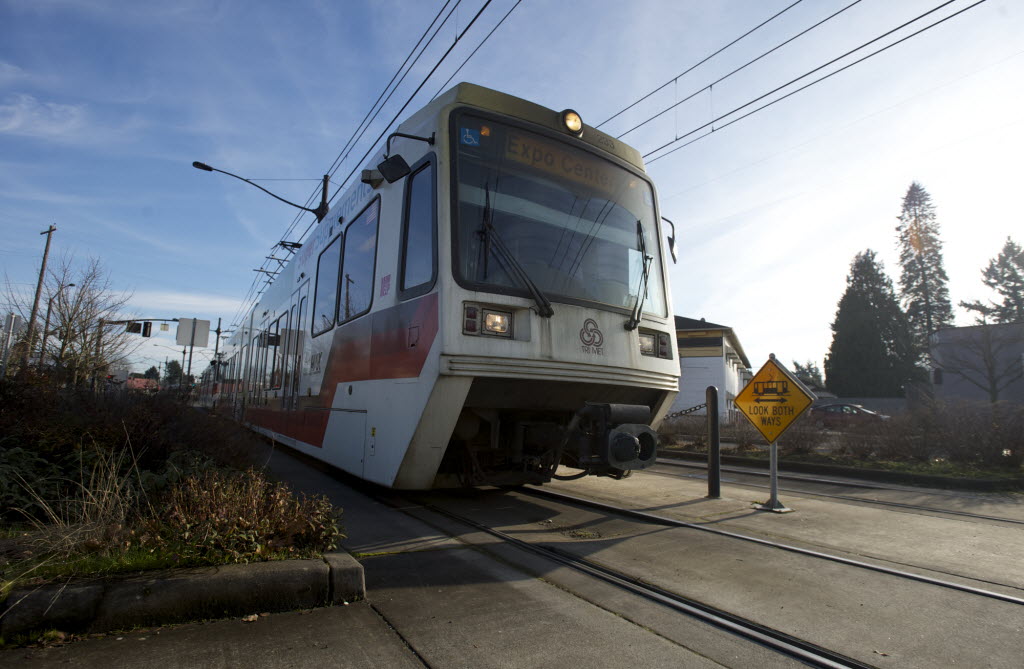A proposed financing plan for annual operations and maintenance of light rail will likely be released Tuesday by C-Tran, just as a longtime critic of the Columbia River Crossing has raised new doubt about projections being used to justify the megaproject.
The Vancouver City Council had a workshop scheduled Monday evening to go over the C-Tran proposal. At the start of the 5 p.m. session, however, Matt Ransom, the city’s project development and policy manager, said it had not been released.
Ransom said he’d spoken to C-Tran Executive Director Jeff Hamm, who Ransom said has been working “round-the-clock” on a financing proposal in advance of a special meeting of the C-Tran Board of Directors, 7 p.m. Thursday at the Vancouver Community Library, 901 C St.
Ransom said the proposal would likely be made public today.
Ransom reminded councilors that plans call for applying this fall for a federal grant to pay the estimated $850 million in construction costs to extend light rail to Clark College. But to apply for a federal grant, C-Tran needs to show how it plans to pay for operation costs.
Last year, voters rejected a proposed sales tax that would have covered the costs, previously estimated at about $2.5 million per year.
Non-tax revenue sources could include a surcharge on rider tickets and a fee for Park & Ride lots, Ransom said.
The Washington Legislature adjourned earlier this year without giving any money to the CRC. After being declared dead by leaders in both states, the project has re-emerged as a pared-down effort with Oregon at the helm. The revised plan would still build a new bridge over the Columbia with light rail and tolls, but would not immediately include any freeway work north of state Highway 14. The revised project would cost an estimated $2.7 billion.
Oregon legislators are preparing to reconvene for a special session on Sept. 30, when the CRC could land on the agenda. Lawmakers there must reauthorize their own state’s financial commitment to the project, which is set to expire without funding from Washington and other conditions being met.
Cortright analysis
Earlier Monday, a longtime critic of the CRC released a new report casting doubt on traffic and tolling projections used by CRC leaders to sell the project.
Portland economist Joe Cortright distributed an analysis calling earlier traffic figures used in the CRC’s Final Environmental Impact Statement “dramatically wrong.” Citing data from Columbia Crossing project consultant CDM Smith, Cortright said more than one-third of existing traffic on the I-5 Bridge could divert to Interstate 205 when tolling on I-5 begins in 2016. That stands in stark contrast to previous assumptions showing minimal diversion and steady traffic growth on I-5, said Cortright, president of Impresa Inc.
CDM Smith is preparing an investment-grade tolling analysis for the CRC, due in December. Cortright said he got the data through a public records request.
“This forecast invalidates the transportation rationale for the CRC project. The CRC was based on the premise that a new, larger bridge is needed to accommodate growing traffic flows,” Cortright wrote in his analysis. “But the CDM Smith forecasts show that with tolling, fewer vehicles will use the new bridge (in 2030) than use it today.”
The data project that daily traffic counts on the I-5 Bridge will drop from 124,000 vehicles today to just 78,400 in 2016 — a drop of more than 45,000 vehicles per day. Meanwhile, I-205 traffic on the Glenn Jackson Bridge will jump from nearly 140,000 vehicles per day now to 187,500 per day in 2016, and push the freeway to its capacity within 10 years, according to the Cortright analysis.
The CRC’s still-evolving finance plan leans heavily on revenue from tolling. That means traffic diversion will go a long way in determining whether the project pencils out financially.



